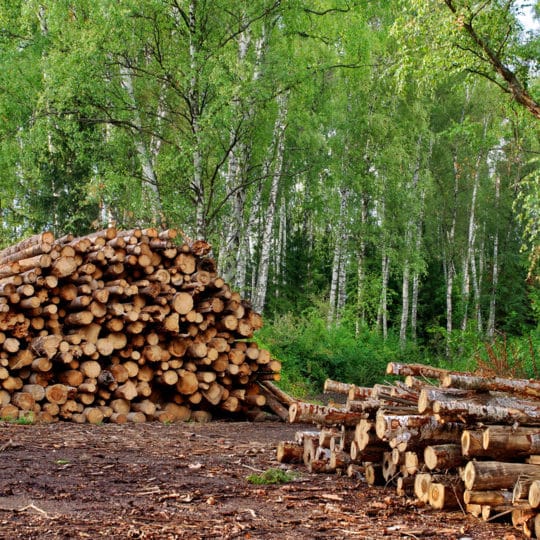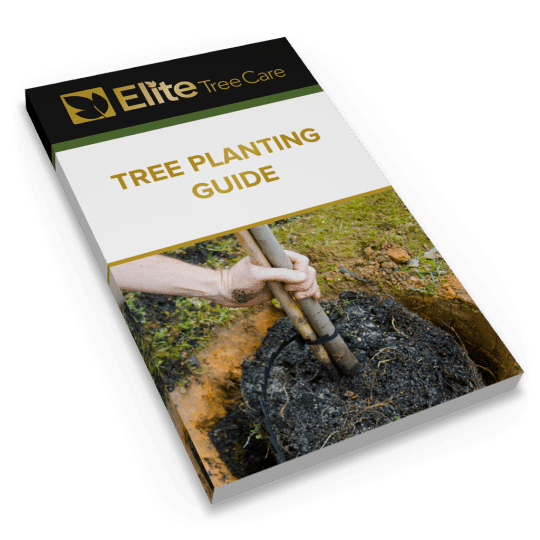Lot Clearing Tips
From a Plan to the Process
Posted
December 27, 2018

There’s a lot to consider when coming up with a lot clearing plan. From the size of the area to the number of helping hands, here’s a list of tips to keep in mind.
Lot Clearing Plan
Before you start clearing the area, have a plan of attack. Some of the most important questions to ask yourself:
- How many trees need to come down? Depending on how much area needs to be cleared, you can save some of the outlining trees. The more trees you can save, the less expensive the job and the better for the environment.
- How much of the job can be done without help? Clearing brush and removing a small tree or two should be easy enough to take care of with heavy-duty tools rented from a lawn garden shop. Just be sure you know how to use it.
- What should a contractor handle? The larger the area, the more help you may need. Especially of there are a lot of trees that need to come down. If you don’t have the time, tools, or know-how, this is a job for a contractor or other expert.
- Do you need a permit? Depending on where you live, there might be protected land or vegetation in the area. You should also consider soil erosion or other environmental factors that impact land clearing. If you hire a contractor, they may be able to handle the permit process for you.
- What’s the budget? Whether you do the job yourself or not, you still need to think about the cost of lot clearing equipment. Contractor costs varies from project to project, so it’s a good idea to get several estimates from several companies. Costs depend on:
- The size of the plot
- Obstacles—such as steep hills, location, soil types— that can make clearing difficult
- Time of year
Lot Clearing Process
Even if a contractor is doing most of the work, there are a few things you can do yourself to help clear the land.
- Remove debris. Move rocks, branches, and trash out of the way of the heavy equipment. Heavy boulders can be dragged away by wrapping a chain around them and pulling with a tractor.
- Mark and protect all plants you want to keep that can’t be moved. Fence off any trees and smaller plants with brightly colored forestry flagging ribbon.
- Prune or mark any low hanging branches to avoid damage caused by operating equipment.
- Clear brush and low vegetation. Hand-held trimmers are easily used to cut anything at ground level, but if there’s a lot of land to cover, rent a brush machine to tear through it more quickly. You can compost, burn, or shred the debris. You can also enlist the help of grazing animals like sheep or goats to clear the land. If you don’t already live on a farm, these animals can be rented for this purpose.
Now, here comes the part where you may need more human help.
- Demolish any existing structures. Old buildings, sheds, stables, or other structures on the land to be cleared should be cleaned out, knocked down, and cleaned up using a wrecker, bulldozer, or other heavy equipment.
- Large tree removal. Taking the tree down and removing the stumps can be a tall order if there are many tall trees around. Trees can then be hauled away, cut into firewood, or made into mulch.
Once the Lot is Clear
There’s still work to do. Fill any holes left from removing trees and plants, and then grade, or level out, the land.
Turn the soil with a plow to make sure the ground is even and to mix in any top layer of organic matter. Avoid plowing wet or steep land. Help prevent soil erosion by letting vegetation cover the area. Follow all erosion control and water runoff rules and be careful not to track heavy soils or mud out of the work site and onto public roads.
Still not clear about lot clearing? Contact the specialists at Elite Tree Care about tree removal and getting land ready for something new.

Download Your FREE Tree Planting Guide
Planting a tree is a cinch, as long as you are properly prepared. Get prepped to plant one tree or 100 with our straightforward guide.